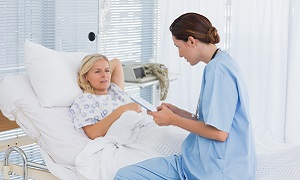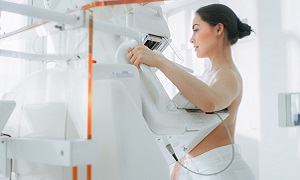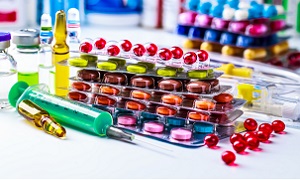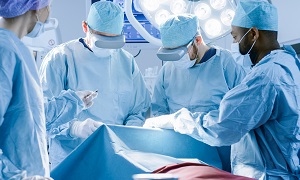Breast Cyst
Breast cysts are round or oval structures that are filled with fluid, which form inside the breast. Around one-fourth of all breast masses turn out to be cysts. However, most breast cysts are benign and therefore they don’t increase your risk of breast cancer. Breast cysts generally don’t require any treatment unless a cyst is large or painful or uncomfortable.
Cysts may occur at any age, although they are more common for women who are in their 40s. If a cyst is large enough to be felt, then it is usually round and fairly movable under the skin. Cysts might also lead to pain, tenderness, or lumpiness in the breast. The symptoms can worsen and get better at different points of the menstrual cycle.
Symptoms
Breast cysts may develop in one or both the breasts. The following can be signs and symptoms of a breast cyst:
- A smooth and easily movable round or oval lump that might be having smooth edges
- Nipple discharge that may be clear, yellow, dark brown, or straw-colored
- A decrease in the size of the breast lump and resolution of other symptoms after a period
- Breast pain or tenderness in the area of the breast lump
- An increase in breast lump size and breast tenderness just before a period
It is important to note that having breast cysts don’t necessarily increase your risk of breast cancer. However, having cysts may make it difficult to find new breast lumps or any other changes that might require evaluation by your doctor. Your breasts may also feel lumpy and painful during menstruation, and therefore it is important to remember how your breasts feel throughout your menstrual cycle. This way, you will know if there is a change.
Normal breast tissue generally feels lumpy or nodular. However, if you feel a new breast lump that refuses to go away, or gets bigger, or persists after a few menstrual cycles, then it is important to see a doctor right away.
If you notice new skin changes on one or both of your breasts, then it is a good idea to see your doctor as well.
Causes
Each of the breasts contains lobes of glandular tissue, which are arranged like the petals of a daisy. These lobes are divided into smaller lobules that produce milk during the pregnancy and breast-feeding period. The supporting tissue giving the breast its shape is made up of fatty tissue as well as fibrous connective tissue.
Breast cysts develop due to the fluid accumulation inside the glands in the breasts.
Breast cysts are generally of two types, and are defined by their size:
Microcysts – Your doctor might see them during imaging tests, though they are too small to feel.
Macrocysts – They are large enough to be felt, and can grow to around 1-2 inches in diameter.
Diagnosis
For diagnosing your breast cancer, your doctor might need one or more of the following tests:
Breast Exam
Imaging tests
Imaging tests generally include the following:
Mammography
Breast ultrasound
This test helps your doctor in determining whether a breast lump is filled with fluid or solid. A solid-appearing mass most likely is a noncancerous lump.
Your doctor might also choose to perform a fine-needle aspiration, instead of imaging tests. During this procedure, your doctor will insert a thin needle into the breast lump, and attempt to withdraw fluid. It is often done using ultrasound to guide the placement of the needle accurately. If fluid comes out, and the breast lump goes away, then it helps your doctor to make a diagnosis immediately.
Treatment
No treatment is required for simple breast cysts, and for those that are fluid-filled and don’t cause any symptoms. Many cysts will also disappear without any treatment. If a cyst persists, feels firmer or if you notice skin changes on the skin over the cyst, then you need to discuss this with your doctor.
Fine-needle aspiration:
Fine-needle aspiration can also be used to treat your breast cyst if all the fluid can be removed from the cyst during the procedure. This results in your breast lump disappearing and your symptoms resolving.
For some breast cysts, you might need to have the fluid drained more than once.
Hormone use:
Your doctor might choose to use birth control pills in order to regulate your menstrual cycles. This may help in reducing the recurrence of breast cysts as well. But because of possible significant side effects, birth control pills or other hormone therapy is usually recommended only for those women who are suffering from severe symptoms. Discontinuing hormone therapy after menopause might also help to prevent breast cysts.




